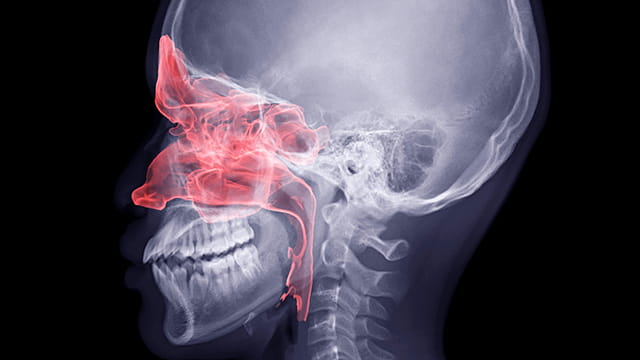Chronic Rhinitis Treatment Uses Temperature-Controlled Radiofrequency Device to Improve Outcomes
April 18, 2024 - Eden McCleskeyA minimally invasive, in-office procedure for chronic rhinitis is proving to be a game-changer for individuals who suffer from near-constant runny nose, post-nasal drip, congestion, sneezing, coughing and nasal and throat itching.
Multiple studies led by Masayoshi Takashima, MD, FACS,FARS, FAAOA, professor and chair of Otolaryngology – Head and Neck Surgery at Houston Methodist Hospital, and Omar Ahmed, MD, assistant professor and otolaryngologist at Houston Methodist Hospital, have demonstrated that temperature-controlled radiofrequency (TCRF) neurolysis of the posterior nasal nerve (PNN) significantly decreases chronic rhinitis symptoms.
"Every year, chronic rhinitis costs Americans billions of dollars in health care expenses and lost productivity, and many individuals who suffer from it find little to no relief in over-the-counter and prescription remedies," Dr. Takashima explained. "With these relatively new, minimally invasive procedures to lyse overactive nerves in the back of the nose, we can finally offer patients a safe, convenient and effective treatment option that provides long-lasting relief."
Recent clinical trials for the RhinAer system — one of three recently FDA-approved techniques for TCRF — demonstrated that the treatment significantly improved symptom burden for congestion, runny nose, sneezing and nasal itching through at least 24 months.
Additionally, a new study examining the real-world outcomes of more than 250 patients who underwent the procedure found that post-nasal drip and chronic cough symptoms were significantly improved by the treatment as well, indications previously omitted from the device's clinical trials.
"Persistent cough and post-nasal drip are really common problems, but TCRF was never really thought to help those patients," said Dr. Ahmed, the trial's principal investigator. "Our data, however, indicated that the procedure was very effective at treating those symptoms. So that means, now there's something we can offer these patients besides over-the-counter medications which are ineffective."
The team also examined the efficacy of these procedures for patients with allergic rhinitis and found significant improvement in symptoms.
In addition to broadening the indications for the procedure, Dr. Ahmed and colleagues examined potential causes of treatment failure among the subset of patients who didn't experience symptom relief.
"We found anatomical differences in the location of many of these patients' PNN nerve, and found that by treating a different area, we could dramatically improve our efficacy," Dr. Ahmed explained.
RhinAer clinical trials
Dr. Takashima served as principal investigator for the entire series of RhinAer clinical trials, which involved 16 centers and included the initial three-month randomized controlled trial with sham procedure control arm and one-year and two-year follow-up studies of patients in the active treatment arm.
The RhinAer System works by heating up the tissue in the back of the nose and impairing the nerve's ability to send signals that promote chronic rhinitis symptoms. Because it is temperature controlled, it has the potential to be more precise, less invasive and less painful for patients than previous radiofrequency, cryosurgical and endoscopic laser ablation techniques that were prone to damaging healthy tissue in the nose.
"By monitoring the tissue temperature and automatically adjusting based on the measurements, the device is able to consistently maintain the correct temperature and avoid injuring nearby tissues," Dr. Takashima said.
In addition to this impressive safety feature, the procedure offers significant treatment benefits for patients.
The response rate for the treatment arm was superior to the sham-control arm in the initial three-month study and has only continued to increase: 67.5% at three months, 75% at six months, 80.6% at 12 months and 87.3% at 24 months. After two years, the average improvement in total nasal symptoms was 64.6%, while 44.6% of patients who used chronic rhinitis medications at baseline reported that they had permanently stopped using one or more medication class.
No serious side effects related to the procedure were revealed during the studies. Some minor side effects, including mild bleeding at the site, moderate dry eyes and soreness, were temporary and only observed in a few individuals.
"Our long-term studies show continued improvement of chronic rhinitis symptoms with time," Dr. Takashima says. "We will continue to follow this group of patients to evaluate efficacy and assess treatment longevity."
Read more about this device in Methodology, published by the Houston Methodist Academic Institute.


